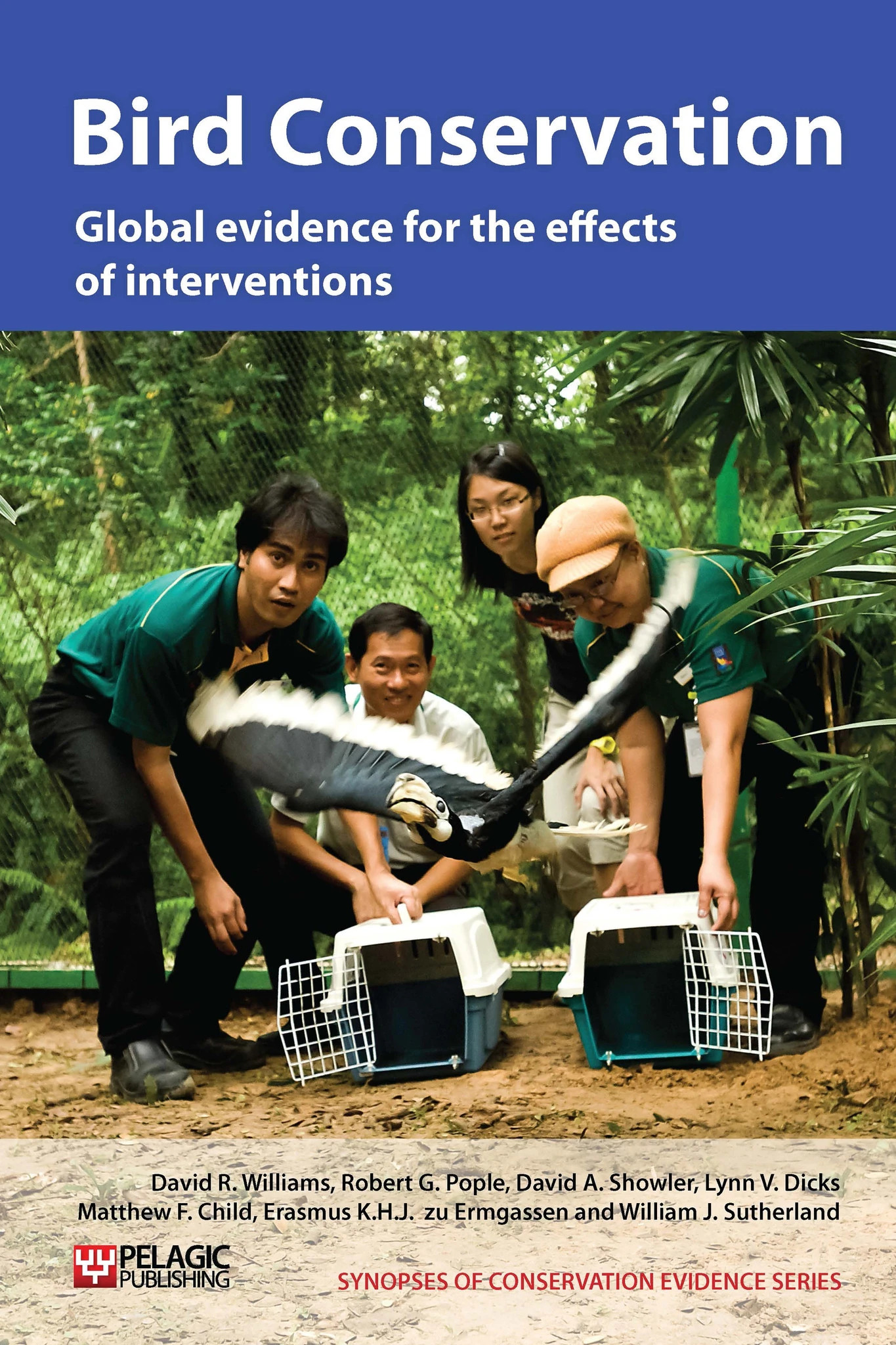Actions to conserve biodiversity
We have summarised evidence from the scientific literature about the effects of actions to conserve wildlife and ecosystems.
Review the evidence from the studies
Not sure what Actions are? Read a brief description.
Search for evidence
e.g. "frogs chytrid"
454 Actions found
Refine
Hide
454 Actions found
Download Actions
| 0 selected |
|
Order results by:
| Action | Effectiveness | Studies | Category | |
|---|---|---|---|---|
|
Use bait throwers to reduce seabird bycatch Action Link |
Unknown effectiveness (limited evidence) | 1 |
|
|
|
Use aversive conditioning to reduce nest predation by mammalian predators Action Link |
Unlikely to be beneficial | 5 |
|
|
|
Use aversive conditioning to reduce nest predation by avian predators Action Link |
Unlikely to be beneficial | 7 |
|
|
|
Use artificial visual and auditory stimuli to induce breeding in wild populations Action Link |
Unknown effectiveness (limited evidence) | 1 |
|
|
|
Use artificial nests that discourage predation Action Link |
Likely to be beneficial | 5 |
|
|
|
Use artificial insemination in captive breeding Action Link |
Unknown effectiveness (limited evidence) | 5 |
|
|
|
Use appropriate populations to source released populations Action Link |
Unknown effectiveness (limited evidence) | 2 |
|
|
|
Use acoustic alerts on gillnets to reduce seabird bycatch Action Link |
Unknown effectiveness (limited evidence) | 1 |
|
|
|
Use a water cannon when setting longlines to reduce seabird bycatch Action Link |
No evidence found (no assessment) | 0 |
|
|
|
Use a sonic scarer when setting longlines to reduce seabird bycatch Action Link |
Unknown effectiveness (limited evidence) | 1 |
|
|
|
Use a line shooter to reduce seabird bycatch Action Link |
Likely to be ineffective or harmful | 2 |
|
|
|
Use 1% barley in wheat crops for corn buntings Action Link |
No evidence found (no assessment) | 0 |
|
|
|
Use ‘mussel socks’ to prevent birds from attacking shellfish Action Link |
Likely to be beneficial | 1 |
|
|
|
Use ‘mosaic management’ Action Link |
Unknown effectiveness (limited evidence) | 2 |
|
|
|
Use ‘flying training’ before release Action Link |
Unknown effectiveness (limited evidence) | 1 |
|
|
|
Use ‘cat curfews’ to reduce predation Action Link |
No evidence found (no assessment) | 0 |
|
|
|
Use ‘anti-predator training’ to improve survival after release Action Link |
Unknown effectiveness (limited evidence) | 2 |
|
|
|
Undersow spring cereals, with clover for example Action Link |
Likely to be beneficial | 5 |
|
|
|
Turn off lights to reduce mortality from artificial lights Action Link |
Unknown effectiveness (limited evidence) | 1 |
|
|
|
Turn deck lights off during night-time setting of longlines to reduce bycatch Action Link |
Unknown effectiveness (limited evidence) | 1 |
|
|
|
Tree pollarding and tree surgery Action Link |
No evidence found (no assessment) | 0 |
|
|
|
Treat wetlands with herbicide Action Link |
Likely to be ineffective or harmful | 4 |
|
|
|
Translocate woodpeckers Action Link |
Likely to be beneficial | 7 |
|
|
|
Translocate wildfowl Action Link |
Likely to be beneficial | 5 |
|
|
|
Translocate songbirds Action Link |
Likely to be beneficial | 12 |
|
Download Actions
| 0 selected |
|

Bird Conservation - Published 2013
Bird Synopsis
Watch this search
If you are familiar with RSS feeds, please click the button below to retrieve the feed URL:
RSS feed for this searchIf you are unfamiliar with RSS feeds, we would suggest reading this BBC article.
Unfortunately, due to the number of feeds we have available, we cannot provide e-mail updates. However, you could use tools such as Feed My Inbox to do this for you.
What are 'Individual studies' and 'Actions'?
Individual studies
An individual study is a summary of a specific scientific study, usually taken from a scientific journal, but also from other resources such as reports. It tells you the background context, the action(s) taken and their consequences.
If you want more detail please look at the original reference.
Actions
Each action page focuses on a particular action you could take to benefit wildlife or ecosystems.
It contains brief (150-200 word) descriptions of relevant studies (context, action(s) taken and their consequences) and one or more key messages.
Key messages show the extent and main conclusions of the available evidence. Using links within key messages, you can look at the paragraphs describing each study to get more detail. Each paragraph allows you to assess the quality of the evidence and how relevant it is to your situation.
Where we found no evidence, we have been unable to assess whether or not an intervention is effective or has any harmful impacts.





)_2023.JPG)














